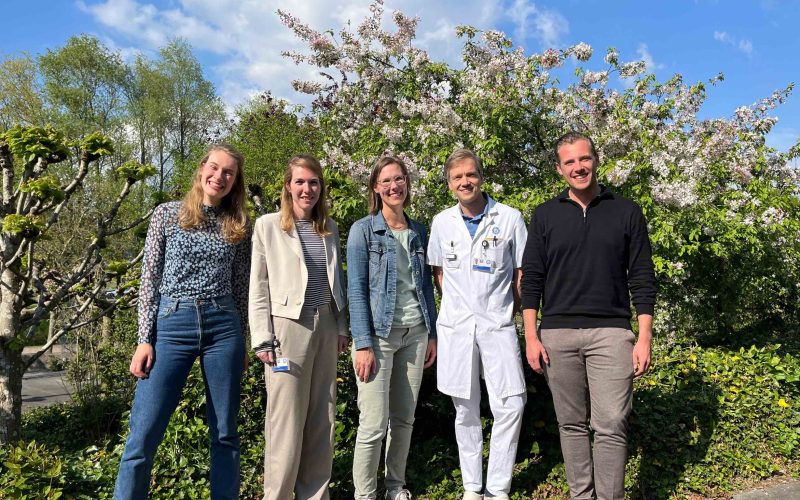In the world of modern research, innovation rarely occurs in isolation. In this series, each month we highlight a new UMC Utrecht research team, talking about how teamwork is essential for making their science work. This month in the spotlight: Team JointCare.
During the Research Days last October, the annual UMC Utrecht Team Science Award was awarded to team Neo-BRAIN. However, Team Science thrives across many other research teams at UMC Utrecht. Here, Team Joint-Care tells how their teamwork helps to improve the diagnosis and treatment of joint damage in patients with bleeding disorders.
Bleeding and subsequent inflammation in joints is a serious symptom in patients with bleeding disorders like hemophilia. Over time, recurrent bleeds lead to chronic joint inflammation, pain, and disability. Even in the absence of overt joint bleeding, joint deterioration still occurs. “Our research has provided evidence for unnoticed bleeds, which can cause joint damage. By detecting these hidden bleeds, inflammation, and bone changes early, we can adapt treatment strategies to prevent bleeding and further joint deterioration,” explains Merel Timmer, assistant professor. The team focuses on improving imaging techniques to achieve early detection.
“Strong collaboration between the Van Creveldkliniek and the department of Radiology and Nuclear Medicine allows us to identify relevant and urgent clinical questions and design studies that have a direct impact on both medical treatment and rehabilitation. By combining our expertise in hematology, radiology, and physiotherapy, we can determine the most effective imaging techniques and strategies. We were able to select and develop strategies that lead to a valid and reliable diagnosis and are clinically applicably in daily practice. Without this collaboration, it would not have been possible to develop and implement solutions that are now improving patient care in multiple (inter)national centers.”
“Since the start of our collaboration, several PhD theses have been completed, contributing to significant advancements in the field. We have used radiographs, ultrasound, and MRI to demonstrate the presence of subclinical bleeding and its link to joint deterioration. Additionally, we have shown that point-of-care ultrasound (POC-US)—a portable imaging technique that can be used outside of radiology departments—is a reliable technique for detecting joint changes caused by bleeding.”
“Our studies revealed that adding POC-US in patients with acute complaints changed diagnosis and treatment in a third of cases. It helped detect bleeds missed during clinical examination and distinguished non-bleeding events that might otherwise be misdiagnosed as bleeds. As a result, we have implemented POC-US in our clinic to improve both screening for subclinical bleeding and diagnosis in the case of acute complaints. These improvements in the diagnosis are expected to optimize subsequent treatment and outcomes.”
“The impact of our research goes beyond our own institution. Several national and international training sessions have led to the implementation of POC-US in multiple centers across the Netherlands and Europe.”
“Waarom moeilijk doen, als het samen kan?” (Why make things difficult when we can do it together?) Our motto reflects our collaborative mindset. We believe that by working together, we can tackle complex medical challenges more efficiently and effectively.”
Team JointCare is a multidisciplinary collaboration between specialists in hematology, radiology, and physiotherapy. The core team members are: Lize van Vulpen (hematologist and assistant professor), Wouter Foppen (radiologist and assistant professor), Merel Timmer (physiotherapist and assistant professor), Floor van Leeuwen (radiology resident), and Gijs Aertssen (physiotherapist and PhD candidate).
Read this article about Team VCR.
Read this article about the winner of the 2024 Team Science Award, team Neo-BRAIN.
